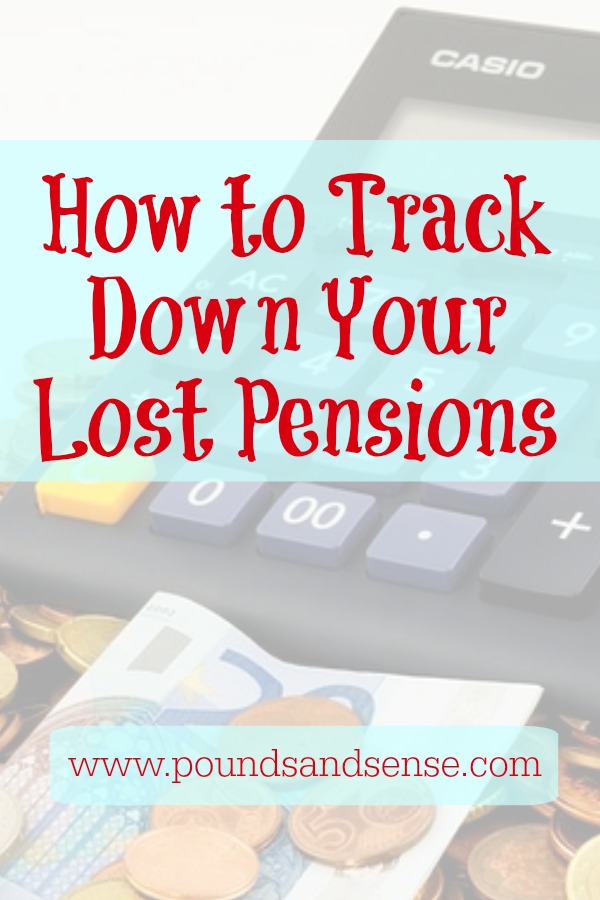How to Track Down Your Lost Pensions
Today I want to talk about what happens when you have several pensions from different periods in your career.
For most of us, the days of “a job for life” are long gone. People now have an average of eleven different jobs during their working lives, and it’s common to start a new pension at each workplace.
You can thus accumulate a number of pensions and it can be easy to lose track of and even forget about some of them.
Table of Contents
Tracing Lost Pensions
In most cases, thankfully, tracing old pensions isn’t too difficult.
For one thing, all pension providers are legally required to send you an annual statement showing how much your pension is worth and how much income it could provide in retirement.
If you’re no longer receiving these statements, maybe because you’ve moved a few times, there are various options open to you.
The first thing you should do is contact your old employer in the case of a workplace pension, or the pension provider in the case of a private pension. When contacting a previous employer you will need to provide as much of the following information as possible:
- Date of birth
- National Insurance number
- When you started and stopped working for the company
- When you joined and left the pension scheme
With a private pension provider you will need to provide:
- Plan number
- Date of birth
- National Insurance number
- Date your pension was set up
Obviously if you don’t have all this information it’s not the end of the world, but it may be harder for the scheme managers to track your pension down.
Ask the provider for as much information as possible about the pension. This should include what type it is (e.g. defined benefit or defined contribution), how much is currently in the pot, how much income it’s likely to provide in retirement, and (very importantly) whether it’s possible to transfer the pension to another provider and any charges this would incur. The Money Advice Service has template letters you can use when writing to a former employer or private pension provider for this purpose.
The Pension Tracing Service
But what if you’ve lost track of a pension and don’t have contact details for the provider? In that case, the government’s free Pension Tracing Service may be able to help.
All you need to know to use this is the name of your previous employer or pension provider. But before contacting the PTS, gather as much information as you can about the employer and/or the scheme, including the information mentioned earlier.
You can then call 0845 600 2537 or visit the PTS website and they will check your information against their database of over 200,000 pension schemes. They should be able to give you details of the scheme’s administrator, and you will need to contact them for further information as above.
Note that the PTS will only give you contact details for your scheme’s administrator. They won’t tell you whether you have a pension or what it is worth.
Consolidating Pensions
Rather than having lots of small pensions, it can make sense to consolidate them in a single pension.
This will simplify the admin and make it easier for you to see how much you have in your pension pot and what income it may be able to provide for you in retirement.
In addition, if you combine your pensions, you can choose a new one that can be easily managed online. You could, for example, use a self-investment platform such as Hargreaves Lansdown, Fidelity or Bestinvest (which I use myself). Another possibility is PensionBee, which specializes in consolidating multiple pensions into a single one you can manage online 24 hours a day.
You can then log into your account from any device to check your balance, make a contribution or see your projected retirement income. And you can choose an investment plan that has lower fees and is aligned with your expectations and attitude to risk.
To consolidate your pensions you will need to contact the providers to get transfer values, and then ask them to transfer the funds into your new scheme. This is generally a simple, straightforward procedure, though it can take a few weeks (or longer) for the transfers to go through.
Boosting Your Pension
Finally, here are a few more ways you may be able to boost the size of your pension.
- Increase your state pension by deferring taking it (see this recent post).
- You may also be able to increase your state pension by making additional National Insurance contributions to fill in missing years from your record.
- Set up a private pension and/or pay extra contributions into your workplace pension, up to the maximum allowed.
- Set up an ISA and/or LISA (under 40s only) for additional tax-free saving.
- Consider peer-to-peer lending and/or property crowdfunding as further ways to diversify your retirement saving.
Finally, if you’re a house owner aged 55 or over, you may be able to use equity release to extract some of the value of your property, either as a lump sum or a monthly income. Most commonly, this involves taking out a mortgage on your home which is only repayable when you die or move into long-term care. I wrote about equity release in this recent post.
As ever, if you have any comments or questions about this post, please do leave them below.

